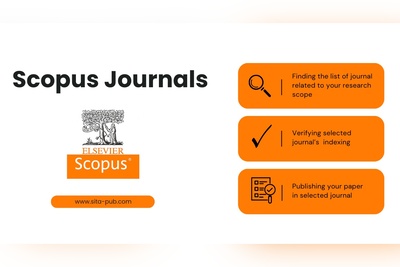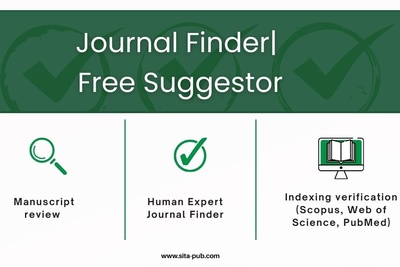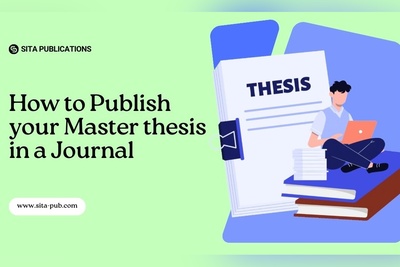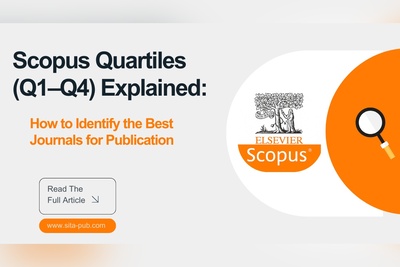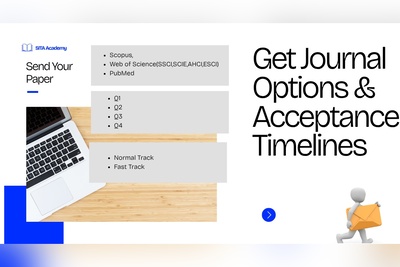Reference Formatting for Journals: APA, MLA, and Vancouver Guide (2025)
Learn how to format references for journals in APA, MLA, and Vancouver styles. This practical guide covers citations for journals, books, chapters, and websites with examples, in-text citation tips, common mistakes to ensure journal-ready references.
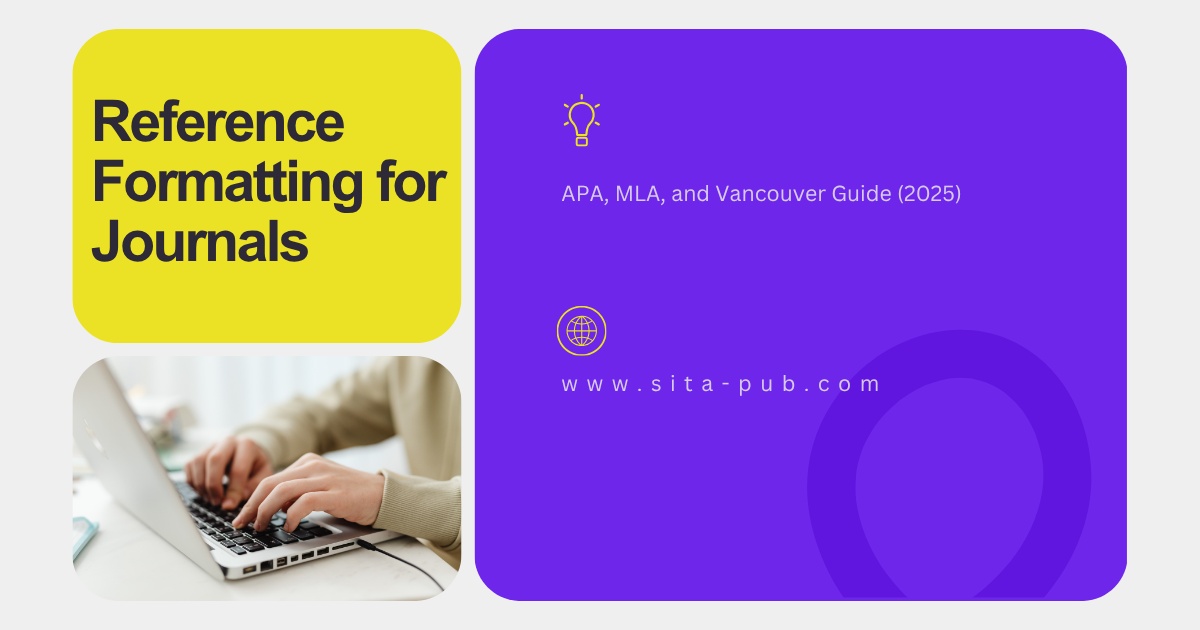
Academic writing is more than just presenting research findings—it’s about presenting them professionally and consistently. One critical aspect of this is reference formatting, which ensures your work is credible, traceable, and ethically sound. Incorrect citations or inconsistent formatting can lead to misunderstandings, accusations of plagiarism, or even rejection by journals.
Each journal often has its own formatting guidelines, so understanding the common reference styles like APA, MLA, and Vancouver is essential for researchers, students, and academics. This guide explains these styles in detail, showing how to reference journals, books, websites, and more, along with proper in-text citations and practical examples.
1. APA (American Psychological Association) Style
Used by: Social sciences, psychology, education, and some medical journals.
Key Features:
Author-date citation system
In-text citation: (Author, Year)
References listed alphabetically at the end
DOI preferred for journal articles
1.1 Journal Articles
Format:
Author, A. A., & Author, B. B. (Year). Title of the article. Title of the Journal, Volume(Issue), page range. https://doi.org/xxxx
Example:
Smith, J., & Brown, L. (2022). Effects of online learning on student performance. Journal of Educational Research, 45(3), 210–225. https://doi.org/10.1016/j.jedures.2022.03.005
In-text citation:
(Smith & Brown, 2022)
1.2 Books
Format:
Author, A. A. (Year). Title of the book. Publisher.
Example:
Johnson, R. (2020). Educational Psychology: Theory and Practice. Pearson Education.
In-text citation:
(Johnson, 2020)
1.3 Book Chapters
Format:
Author, A. A., & Author, B. B. (Year). Title of chapter. In E. E. Editor (Ed.), Title of the book (pp. xx–xx). Publisher.
Example:
Miller, K. (2019). Cognitive development in early childhood. In S. Thomas (Ed.), Child Psychology Handbook (pp. 45–67). Springer.
In-text citation:
(Miller, 2019)
1.4 Websites
Format:
Author, A. A. (Year, Month Day). Title of webpage. Website Name. URL
Example:
American Psychological Association. (2023, July 10). Understanding reference formatting. APA.org. https://www.apa.org/reference-guide
In-text citation:
(American Psychological Association, 2023)
2. MLA (Modern Language Association) Style
Used by: Humanities, literature, cultural studies.
Key Features:
Author-page citation system
In-text citation: (Author page number)
Works Cited list at the end, alphabetically
Less emphasis on DOI; URLs optional
2.1 Journal Articles
Format:
Author Last Name, First Name, and Second Author First Name Last Name. “Title of Article.” Title of Journal, vol. number, no. number, Year, pp. xx–xx.
Example:
Smith, John, and Laura Brown. “Effects of Online Learning on Student Performance.” Journal of Educational Research, vol. 45, no. 3, 2022, pp. 210–225.
In-text citation:
(Smith and Brown 212)
2.2 Books
Format:
Author Last Name, First Name. Title of Book. Publisher, Year.
Example:
Johnson, Robert. Educational Psychology: Theory and Practice. Pearson Education, 2020.
In-text citation:
(Johnson 55)
2.3 Book Chapters
Format:
Author Last Name, First Name. “Title of Chapter.” Title of Book, edited by Editor Name, Publisher, Year, pp. xx–xx.
Example:
Miller, Karen. “Cognitive Development in Early Childhood.” Child Psychology Handbook, edited by Susan Thomas, Springer, 2019, pp. 45–67.
In-text citation:
(Miller 47)
2.4 Websites
Format:
Author Last Name, First Name. “Title of Webpage.” Website Name, Publisher (if different), Date, URL.
Example:
American Psychological Association. “Understanding Reference Formatting.” APA.org, 10 July 2023, https://www.apa.org/reference-guide.
In-text citation:
(American Psychological Association)
3. Vancouver Style
Used by: Medicine, biomedical sciences, and clinical research.
Key Features:
Numbered references in-text
References listed in the order they appear in the text
Often used in biomedical journals
3.1 Journal Articles
Format:
Author AA, Author BB. Title of article. Journal Name. Year;Volume(Issue):page numbers. doi:xxxx
Example:
Smith J, Brown L. Effects of online learning on student performance. J Educ Res. 2022;45(3):210–225. doi:10.1016/j.jedures.2022.03.005
In-text citation:
[1]
3.2 Books
Format:
Author AA. Title of Book. Edition (if applicable). Publisher; Year.
Example:
Johnson R. Educational Psychology: Theory and Practice. 2nd ed. Pearson Education; 2020.
In-text citation:
[2]
3.3 Book Chapters
Format:
Author AA, Author BB. Title of chapter. In: Editor EE, editor. Title of Book. Publisher; Year. p. xx–xx.
Example:
Miller K. Cognitive development in early childhood. In: Thomas S, editor. Child Psychology Handbook. Springer; 2019. p. 45–67.
In-text citation:
[3]
3.4 Websites
Format:
Author AA. Title of webpage [Internet]. Place of publication: Publisher; Year [cited Year Month Day]. Available from: URL
Example:
American Psychological Association. Understanding reference formatting [Internet]. Washington, DC: APA; 2023 [cited 2025 Nov 17]. Available from: https://www.apa.org/reference-guide
In-text citation:
[4]
Reference Style Summary Table
Style | In-Text Citation | Journal Article Example | Book Example | Website Example |
APA | (Author, Year) | Smith, J., & Brown, L. (2022). Effects of online learning. J Educ Res, 45(3), 210–225. https://doi.org/... | Johnson, R. (2020). Educational Psychology. Pearson. | American Psychological Association. (2023, Jul 10). Understanding reference formatting. APA.org. URL |
MLA | (Author Page) | Smith, John, and Laura Brown. “Effects of Online Learning.” J Educ Res, vol. 45, no. 3, 2022, pp. 210–225. | Johnson, Robert. Educational Psychology: Theory and Practice. Pearson, 2020. | American Psychological Association. “Understanding Reference Formatting.” APA.org, 10 July 2023, URL |
Vancouver | [1] | Smith J, Brown L. Effects of online learning. J Educ Res. 2022;45(3):210–225. doi:... | Johnson R. Educational Psychology. 2nd ed. Pearson; 2020. | American Psychological Association. Understanding reference formatting [Internet]. Washington, DC: APA; 2023 [cited 2025 Nov 17]. Available from: URL |
4. Practical Tips for Formatting References
Check Journal Guidelines: Every journal has its own requirements; always confirm before submission.
Use Reference Management Software: Tools like Zotero, Mendeley, or EndNote help maintain consistency.
Include DOI When Available: Especially for APA and Vancouver styles.
Consistent Punctuation and Italics: Pay attention to journal titles, volume, issue numbers, and page ranges.
Double-Check In-Text Citations: Ensure they match the references list exactly.

5. Common Mistakes to Avoid
Mixing different reference styles in one paper
Missing authors or publication year
Incorrect page numbers or DOI
Using outdated journal abbreviations
Ignoring online source citation rules
Conclusion
Correct reference formatting is essential for academic credibility and successful publication. APA, MLA, and Vancouver styles each have their distinct rules for citing journals, books, chapters, and websites. By following the correct style and carefully checking every detail, authors can improve manuscript acceptance chances and maintain research integrity.
Pro Tip: Always consult the latest journal-specific guidelines and use professional tools or support if needed.
SITA Academy – Professional Formatting Assistance
Ensure your manuscript meets journal-specific reference and formatting requirements with SITA Academy. Our expert team can:
Format your entire paper, not just references
Convert all citations into APA, MLA, or Vancouver styles
Adjust formatting according to your chosen journal guidelines
Ensure consistency, correct in-text citations, DOIs, and more
Send us your manuscript today and get it professionally formatted, ready for submission to your target journal.

Verified Contact Channels
If you have any questions, inquiries, or would like to learn more about our services, please don't hesitate to reach out to us. Our dedicated team is ready to assist you.







